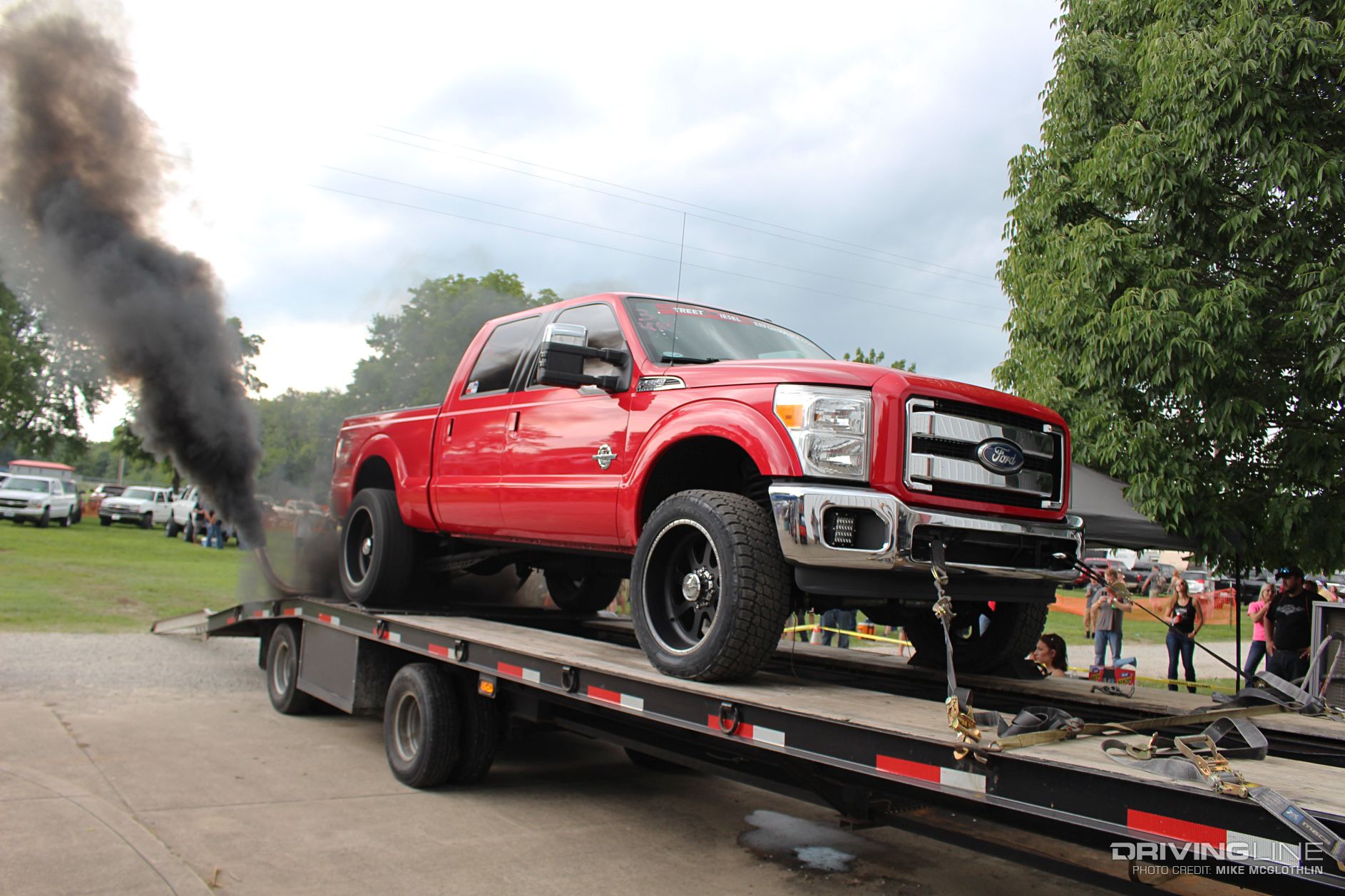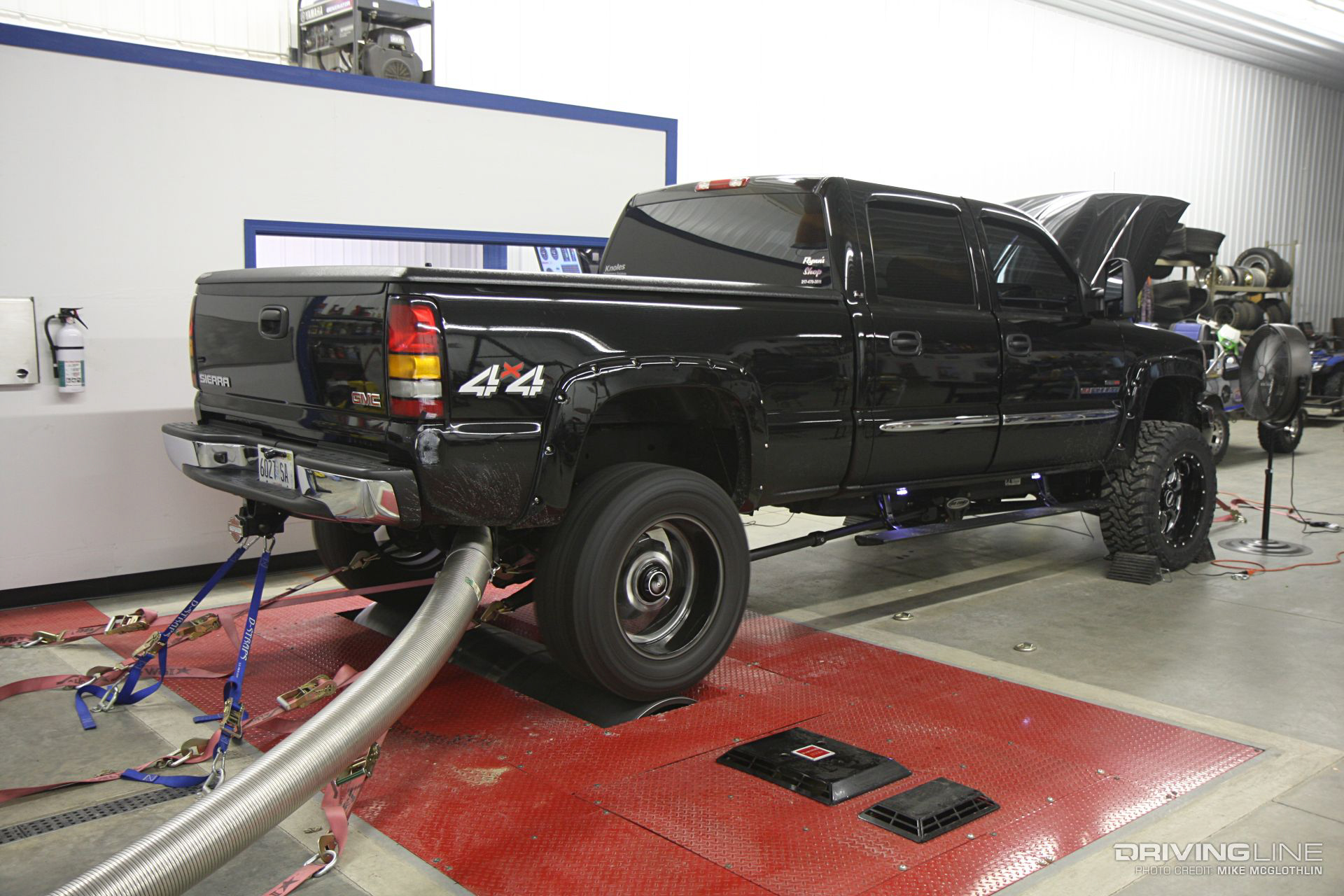Over the past decade, chassis dyno events have caught on like wildfire in the diesel industry. How much horsepower, torque and boost an oil-burner makes is highly intriguing to many of us. Given how far diesel technology has come over the past decade, it’s no surprise that the 12-, 11-, and 10-second pickups you see tearing down the drag strip can put up some big numbers on the rollers.
In 2016, it’s not uncommon to witness a diesel laying down more than 1,000hp and 2,000 lb-ft of torque. The magnitude of the numbers diesels can produce has birthed dozens upon dozens of dyno competitions taking place each year, some of which pay out in the thousands to the winner.

But what devices are used to extract such mammoth-sized numbers from these trucks? And what model dyno is best to use?
Follow along for a full tutorial on the most commonly used chassis dynamometers in the diesel industry. From Dynojets to Dynocoms and load cell to inertia, we've got it covered.
What Does a Chassis Dyno Do?
A chassis dyno measures the amount of horsepower and torque a vehicle makes at the drive wheels. In order to obtain these numbers, the dyno simulates the load and operating conditions the vehicle will see on the street or track. A dyno allows us to get baseline horsepower and torque information to build off of (i.e. a starting point) and also allows us to conduct before/after tests in a controlled environment where the same test can be run back-to-back.

A dyno can best be described as a tool—a tool that collects data and makes it possible to maximize the performance of a vehicle, as well as validate its power gains with repeatability. Most modern dynos also feature data acquisition systems (either as standard equipment or as an added option) that record all kinds of parameters, from boost to fuel pressure to engine oil temp.
What Does a Dyno Test Entail?
Once the vehicle is secured in place on the dyno (usually via multiple heavy-duty ratchet straps), a test rpm or speed is selected for both the start and stop points of the dyno run. Selecting the correct start and stop point is vital in order for the test to be conducted in the appropriate window of the engine’s power band. During testing, the vehicle’s transmission remains in one gear (normally Direct, but sometimes an Overdrive gear is selected).

To obtain a torque reading, an optical wheel tachometer is used to pick up the engine’s rpm signal. This tool uses an infrared beam and reflective tape (typically on the engine’s harmonic balancer) to collect engine speed data, and usually has a magnetic base for secure mounting.
Load vs. Inertia
In the diesel industry, placing the engine under load is vital, as it allows the turbo(s) to produce more boost pressure and is the best way to replicate the kind of boost the truck sees on the street or track. Because boost is such an important part of the power-making equation on a diesel, most enthusiasts prefer to run their trucks on a load cell dyno rather than on an inertia-only unit. A typical load cell dyno uses eddy current power absorbers to apply load to the vehicle. Effectively a variable electronic braking system, the amount of load can be adjusted (almost infinitely) to accommodate virtually any vehicle. As a general rule of thumb, higher horsepower trucks (with larger, harder-to-spool turbochargers) require more load be placed on them in order to achieve the most accurate numbers possible.

Inertia dynos are void of any electrical or water-based load being placed on the vehicle, and other than the weight of the roller(s) no load is placed on the vehicle. An inertia dyno deduces horsepower by measuring the rollers’ rate of acceleration. While it’s harder for pure-inertia dynos to load a diesel truck enough to make full boost (the end result being lower numbers), an experienced dyno operator can still achieve good results with the right technique and know-how.

The most common way to make adequate boost on an inertia dyno is by power-braking the truck. While applying the brakes and trying to accelerate the rollers at the same time is hard on equipment, it allows the engine to be loaded, which brings boost up progressively, before the actual dyno test begins.
SuperFlow
The SuperFlow name is well-known throughout the diesel industry, thanks to offering a wide array of state-of-the-art load cell chassis dynos, engine dynos, transmission dynos and flowbenches. The two-wheel drive AutoDyn 849 model shown here is the one we come across the most.

It uses dual eddy current absorbers (brakes) to provide load, features two 42-inch diameter rollers with knurled surfaces for optimum traction and has 1,600hp of loaded absorption capability.
Dynojet 248C
The 248C chassis dyno from Dynojet Research is the most commonly used inertia dyno in the automotive industry and is believed by many to be the most accurate. Purely an inertia dyno, it measures the time it takes a vehicle to spin its two 48-inch diameter rollers (the technical formula used is: Force = Mass x Acceleration) in order to come up with a horsepower number.

While the 248C isn’t a load cell dyno, in the hands of a capable operator, it can be just as accurate as the load units when measuring the power output of diesels. Oftentimes, a diesel truck’s transmission is placed in a higher gear (Overdrive vs. direct) and/or the truck is power-braked in order to load the engine harder.
Dynojet 224xLC
After spending a little time on one of Dynojet Research’s 224xLC dynos, we have to say it’s an impressive piece of hardware. A load cell unit with 2,000hp and 200 mph capability, it also offers the ability to run closed loop load testing by targeting rpm, mph or percentage of load. This particular 224xLC, located at DC Chassis Dyno in Brownsburg, Indiana, is primarily used to dyno sprints and midgets, but also sees quite a few diesel trucks.

Mustang
In our experience, the older, two-wheel drive, dual roller dynos from Mustang Dynamometer are best suited for trucks making less than 500hp. The dual roller design allows tire spin to alter results on higher horsepower trucks (i.e. lower numbers), which we’ve seen play out on multiple occasions over the years.

Four-Wheel-Drive Mustang
On the other hand, one of the finer pieces of Mustang dyno equipment we’ve come across resides at the DuramaxTuner.com facility in Marengo, Illinois. With a load cell Mustang dyno that’s up and running at least 40 hours a week, it spits out both accurate and consistent numbers on trucks ranging from 500hp to 1,000-plus.

It utilizes three power absorbers (brakes), is four-wheel drive and is even capable of simulating boosted 4x4 launches (what diesels do at the drag strip). Even better yet, it can also replicate sled pulling scenarios for truck pullers.
Dynocom
Built by Dynocom Industries, the company’s 15,000 series chassis dyno has both affordability and accuracy on its side. If set up correctly, this dyno can compete with the high-dollar units available elsewhere in the industry. The two-wheel drive DC 15,000 shown is equipped with an optional center-mounted eddy brake (DC-PAU-750) for dyno testing diesels, which is capable of supporting more than 3,000 lb-ft of torque.

Correction Factors
Talking correction factors can open up a can of worms to say the least. Some folks swear by them, while others despise them. We tend to side with the latter enthusiast, and put more faith in uncorrected dyno numbers over corrected ones. Reason being, correction factors are used to illustrate the kind of horsepower and torque a vehicle would have made in ideal conditions. The problem with this is that conditions are hardly ever ideal. After all, how many of us have dyno’d at sea level, on a 60-degree day, with exceptionally low relative humidity and 29.92 inHg showing on the barometer?
Instead of taking any of that into account and “correcting” the data collected during a dyno test, uncorrected numbers cut to the chase and tell us that, on this day, and in these weather conditions, our truck made these horsepower and torque numbers. Three different correction factors are present on the dyno graph shown here... but which one is the most accurate?

For us, it’s simply easier to just cut out the fancy formulas and stick to uncorrected numbers.
Drawing a Crowd
Dyno events have a way of attracting huge crowds, and high horsepower and obscene torque numbers have a way of luring in the masses to watch a couple dyno pulls. The LMM Duramax pictured here created a buzz at this particular event, namely because the truck drove 700 miles round trip to get to and from the event, laying down 900-rwhp while on the rollers.

Since then, the truck has gained a turbo (triples) and now runs mid 10’s in the quarter-mile!
Downshifting Issues
For trucks with automatic transmissions, finding the sweet spot where the engine can be loaded at lower rpm and not downshift is important for a dyno operator. To gather the most accurate horsepower and torque data possible, a full sweep throughout the rpm range needs to be conducted in one gear.

Note that upshifts also skew data, as they create power spikes on the dyno graph. In some cases (especially with the 5R110 automatic found in ’03-’10 Ford Super Duty’s), a tune can be written that locks the transmission in a certain gear for dyno purposes.
Don’t Forget Engine Dynos!
While chassis dynos seem to get all the spotlight in the diesel realm, engine dynamometer testing is very much alive and well. In the upper echelon of truck pulling for instance, where the trucks use one-speed transmissions and a chassis dyno is impractical if not impossible to test them on, the crankshaft or flywheel is directly linked to the dyno. No drivetrain losses here.
